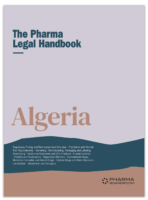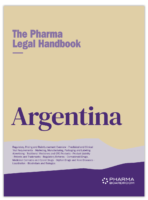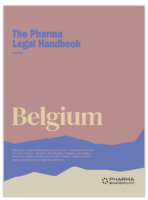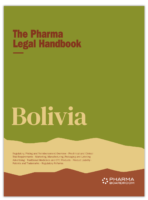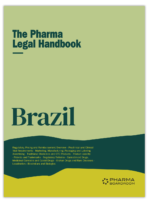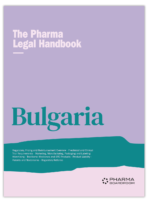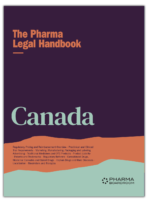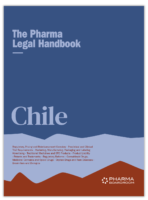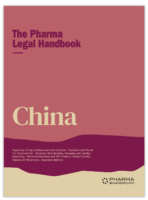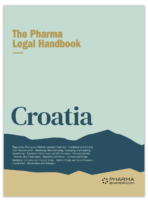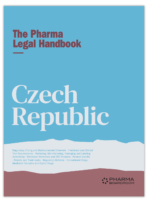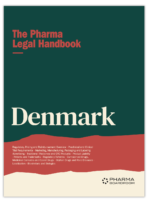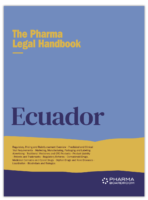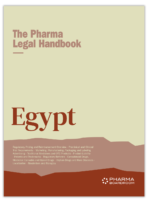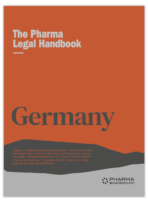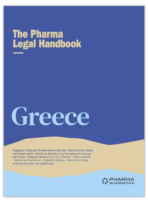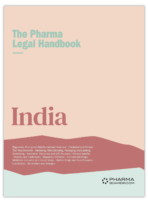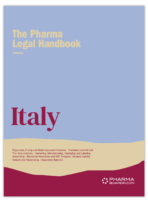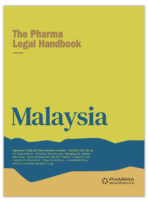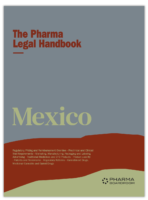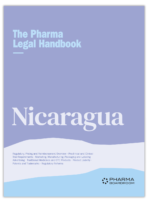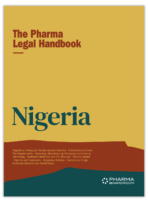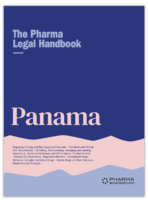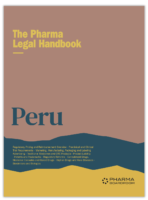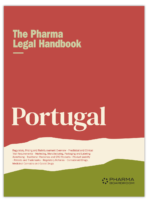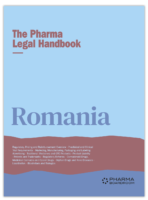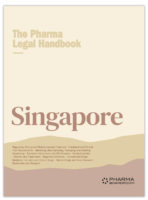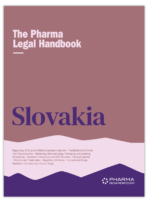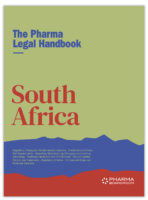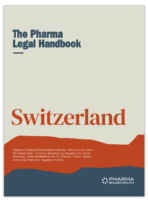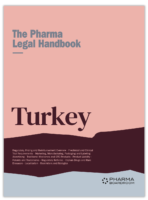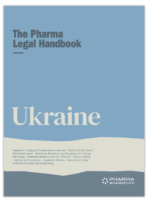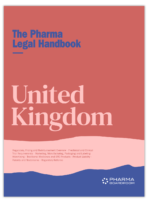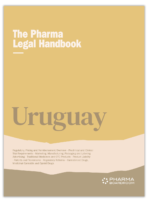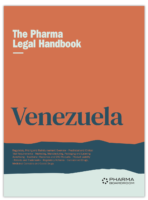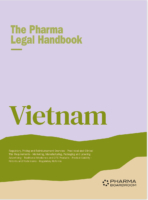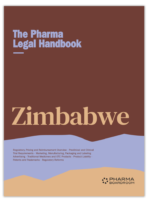Patents and Trademarks
Olivares / Mexico
Need to know the legal situation for patents and trademarks in Mexican pharma? Then read on! Prepared in association with Olivares, a leading global law firm, this is an extract from The Pharma Legal Handbook: Mexico, available to purchase here for GBP 99.
1. What are the basic requirements to obtain patent and trademark protection?
To obtain the protection of a trademark for a sign, it is required to file an application before the Mexican Intellectual Property Office (IMPI) IMPI and to comply with the formalities established by the IP law.
While in the case of patents it also necessary to file an application before the IMPI and to comply with the formalities established by the IP law.
2. What agencies or bodies regulate patents and trademarks?
In Mexico patents and trademarks are regulated by the Mexican Intellectual Property Office (IMPI).
3. What products, substances, and processes can be protected by patents or trademarks and what types cannot be protected?
TRADEMARKS
In accordance with the IP Law, any sign perceptible by the senses can be protected, provided that they are sufficiently distinctive and able to identify the products or services to which they apply or intended to apply with respect to those in the same class.
The following signs may constitute a trademark:
- The denominations, letters, numbers, figurative elements and color combinations, as well as the holograms.
- The three-dimensional shapes;
- Trade names and denominations or company names
- The proper name of a person.
- Audible perception.
- Olfactory perception.
- The plurality of operational or image elements, including, among others, size, design, color, shape arrangement, label, packaging, decoration or any other than when combined, distinguish products or services in the market.
Taste perception cannot be protected in Mexico.
PATENTS
According to IP Law, the inventions that are new, involve an inventive st eps, and are capable of industrial application are patentable. In Mexico, methods and process claims are considered patentable subject-matter as long they fulfill the patentability requirements, with exception of: i) Cloning procedures ii) essentially biological processes for obtaining, reproducing and propagating plants and animals; iii) methods for carrying out mental processes, playing games or doing business, and mathematical methods; iv) methods of presenting information; v) methods of surgical, therapeutic or diagnostic treatment applicable to the human body and to animals, and vi) vegetable varieties and animal breeds).
Regarding therapeutic treatment methods, please note that the patentability thereof can be dependent upon the formulation of the claims. IMPI, for example allows Swiss type claims (Use of Compound/Composition X for the manufacture of a medicament for treating Y), or as purpose-limited product claims (Compound/composition X for use in …). In this respect, please note that currently there is an absence of criteria and guidelines in IMPI about which medical use claims can be accepted, since some Examiners accept both purpose-limited product claims and Swiss type claims. Taking into consideration that IMPI usually follows EPO’s criteria and that it is easier to argue that purpose-limited product claims encompass products, preferably we recommend filing the purpose-limited product claim format. Please note that product claims are easily listed in the patent linkage gazette in order to prevent the violation of the patent through approvals before the regulatory agency.
According to the IP Law, computer programs are not considered as inventions.
The figure of Software is protected under the copyright laws. It is worth mentioning that they can be patentable as computer-implemented processes.
4. How can patents and trademarks be revoked?
TRADEMARKS
I. Invalidity action
The grounds of invalidation established by the IP law are:
- The trademark has been granted in contravention of the provisions of the IP Law.
- The trademark is identical or confusingly similar to another one that has been used in Mexico or abroad prior to the date of filing of the application, and it is applied to the same or similar products or services, provided that the party who asserts the greater right for prior use proves the have used the trademark continuously in Mexico or abroad prior to the mentioned filing date or declared use, then the applicable statute of limitations is three years as of the date the Trademark Gazette that published the disputed registration was put into circulation;
- The registration was granted on the basis of false information mentions in the application. The applicable statute of limitations is five years as of the date the Trademark Gazette that published the disputed registration. Was put on circulation;
- The existence of a senior registration for a trademark identical or similar to that covered by a junior registration, and the goods or services covered thereby are similar or identical in nature. The applicable statute of limitations is five years from the publication date of the Trademark Gazette detailing the disputed registration;
- Registration is obtained by the agent, representative, user or distributor without the authorization of the owner of the foreign trademark registration. No statute of limitations applies to this action; or
- A general cause of invalidity is available and it relies on the granting of registration against any provisions of the IP law or the law in force at the time registration was granted. This cause of cancellation has no statute of limitations.
- The title holder of the trademark registration does not prove the veracity of the date of first use declared in the application.
II. Cancellation actions
The IP law establishes as that if a trademark is not used for three consecutive years on the products or services for which it was registered, the trademark registration will be subject to cancellation for lack of use, unless the holder or the user of a recorder-granted license has used it during the three consecutive years’ lack of use.
Furthermore, a cancellation action can be brought against a registration when the owner of it has provoked or tolerated a trademark has become a generic term.
PATENTS
The IP law establishes several grounds on which a patent can be invalidated:
- When the patent was granted in contravention of the provisions on requirements and conditions for the grant of patents.
- When the protected subject matter is not considered an invention, the invention is not patentable, or lacks novelty, inventive activity or industrial application.
- When the invention is not disclosed in a sufficiently clear and complete manner, so that it can be carried out by a person skilled in the art.
- When the claims exceed the disclosure contained in the application, as it was initially presented to the Institute.
- When by error or serious oversight a right of priority has been recognized and thereby unduly determined the novelty or inventive activity of the subject matter protected by the patent.
- When it has been granted to those who did not have the right to obtain it.
The invalidity actions may be filed at any time, as of the date on which the publication of the patent in the Gazette takes effect.
If the grounds for invalidity partially affect the patent, it will be declared partially invalid.
5. Are foreign patents and trademarks recognized and under what circumstances?
TRADEMARKS
When the registration of a trademark is applied for in Mexico within the periods specified in international treaties or, failing that, within six months of the filing of applications in other countries, the filing date in the country of first filing may be recognized as the priority date.
For the priority referred to be recognized, the following requirements shall be met:
- The priority must be claimed, and proof given of the country of origin and of the filing date of the application in that country, when applying for registration;
- The application filed in Mexico must not seek to cover products or services additional to those provided for in the application filed abroad, in which case priority will be recognized only for those specified in the application filed in the country of origin;
- The requirements specified in international treaties, the IP Law and the regulations thereunder must be met within three months of the filing of the application.
Additionally, if a trademark is identical or confusingly similar to another that has been used in the country or abroad prior to the filing date of the application in respect of the registered trademark and has been applied to the same or similar products or services, provided that the person who asserts the stronger right by virtue of prior use proves uninterrupted use of the in the country or abroad prior to the filing date or, where applicable, prior to the date of first declared use by the person who has registered it; it shall be invalid.
PATENTS
Where a patent is requested having been applied for abroad, the filing date in the country of first filing may be recognized as the priority date, provided that filing in Mexico occurs within the periods specified by international treaties or, otherwise, within 12 months after the application for a patent in the country of origin.
To give priority referred shall meet the following requirements:
- Include in the application in Mexico, priority shall be claimed, the country of origin of the priority the date on which the application was filed in that country shall be specified and number of the application in that country;
- Submit a certified copy of the priority claimed and, where appropriate, the translation into Spanish, to at the latest within a period of three months from the filing of the application in Mexico.
- The requirements specified in international treaties, the IP Law and the regulations thereunder shall be complied with within 3 months after filing the application.
It is worth mentioning that parallel imports are not recognized by the IP Law in Mexico.
6. Are there any non-patent/trademark barriers to competition to protect medicines or devices?
Yes, in Mexico there is no a specific body of legislation for Data package exclusivity (DPE) but in 2012 COFEPRIS issued in 2012 internal guidelines to provide 5 years of-term protection limited to new chemical entities five years.
However, the reliability and legal value of these guidelines is still uncertain.
Based on the interpretation of international treaties along with the Mexican legislation specifically related to approval of new molecules (new chemical entities, formulations and new indications), along with the New Molecules Committee’s (NMC) regulation (assists COFEPRIS with the analysis of technical and scientific data in connection with clinical trials, approval of new molecules and biologics) regulatory data exclusivity for 5 years for new chemical entities, formulations and new indications has been obtained through litigation. Regarding biologics, there have been precedents already involving a longer period of protection, although the period has been decided case by case basis. It is mentioning that, NAFTA mentions that the protection should be for at least 5 years. On the other hand, some countries grant a wider length in regulatory exclusivity for biologics such as the United States and, Canada, among others.
The agreement between the U.S. Canada and Mexico (USMCA/T-MEC) came into force on July 1st 2020. This new agreement kept similar wording as NAFTA, providing only at least 5 yeast for new chemical molecules.
7. Are there restrictions on the types of medicines or devices that can be granted patent and trademark protection?
No, there are no restrictions to any types of medicines or devices that can be granted patent and trademark protection
8. Must a patent or trademark license agreement with a foreign licensor be approved or accepted by any government or regulatory body?
The only requirement established by the IP law is that for the license to have effects on third parties it has to be duly recorded before IMPI.
Likewise, according to the linkage regulation established in article 147 BIS of the Mexican Industrial Property Regulations and article 167 BIS of the Health.
Law Regulations, COFEPRIS is bound to observe the patents which are listed in the gazette listing those patents in force that cover allopathic medicines, according to the generic name of the active ingredient, prior to granting marketing authorizations to third parties different to the titleholder, and alternatively to present the corresponding license.








